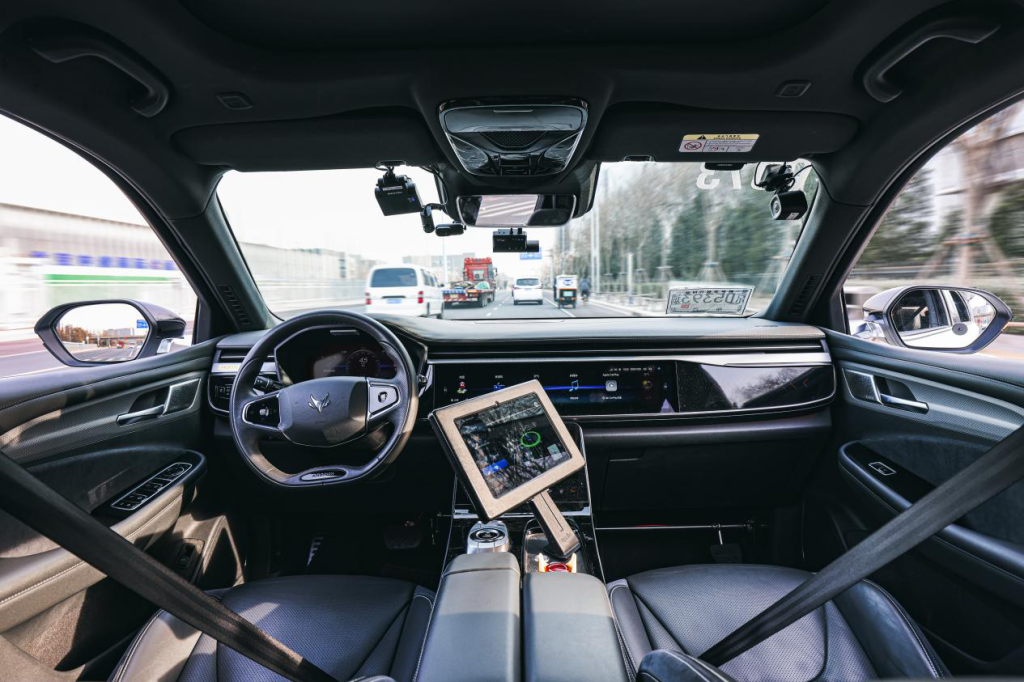Introduction:
The global automotive industry is currently undergoing one of the most transformative shifts in its history. The rise of new energy technologies, particularly in the form of electric vehicles (EVs), hydrogen fuel cells, and battery advancements, is disrupting traditional automotive paradigms. As governments push for zero-emission goals, consumer preferences shift toward greener options, and environmental concerns escalate, traditional automakers are under immense pressure to adapt and innovate.
In this context, new energy technologies are at the forefront of this transformation, not just in terms of what powers the vehicle but also how vehicles are manufactured, distributed, and experienced. For legacy automakers, the challenge is how to navigate this transition from internal combustion engine (ICE) vehicles to new energy vehicles (NEVs), while maintaining their relevance, market share, and profitability.
But as the industry evolves, the key question emerges: Who will lead this transformation? Will it be the traditional giants of the industry, or will new entrants—tech companies and startups—take the wheel?
This article explores how new energy technologies are driving the transformation of traditional carmakers and who might emerge as the future leaders of the global automotive industry.
1. The Role of New Energy Technologies in Automotive Transformation
A. Electric Vehicles (EVs) as the Vanguard of Change
The most significant development in the automotive industry in recent years has been the rise of electric vehicles (EVs). As governments around the world impose stricter emissions standards and consumers demand more sustainable transportation options, EVs have rapidly gained traction. Battery technology, charging infrastructure, and range improvements are pushing EVs closer to mainstream adoption.
For traditional automakers, the transition to EVs presents both challenges and opportunities:
- Shift in Manufacturing Focus: Automakers used to focus primarily on internal combustion engines, fuel systems, and exhaust technologies. With the move to EVs, the emphasis shifts to battery technology, electric motors, and power electronics. This requires automakers to either develop new in-house capabilities or collaborate with tech companies and battery manufacturers.
- Cost and Efficiency: Battery prices have been falling rapidly, making EVs more affordable to the average consumer. However, while EVs are becoming more cost-competitive, automakers must scale production and optimize manufacturing to ensure that profit margins remain healthy.
- Sustainability and Corporate Responsibility: For legacy automakers, embracing electric mobility is not just a market trend but a necessity to meet global environmental goals. As traditional manufacturers increasingly see sustainability as a critical part of their brand identity, they are aligning their corporate strategies to offer cleaner, greener vehicles to consumers.
B. Hydrogen Fuel Cells and the Promise of Zero-Emissions Mobility
While electric vehicles dominate much of the conversation on new energy vehicles, hydrogen fuel cell vehicles (FCVs) offer another promising path toward zero-emissions mobility. Hydrogen fuel cells generate electricity through a chemical reaction between hydrogen and oxygen, emitting only water vapor as a byproduct.
- Hydrogen’s Advantages: Unlike electric batteries, hydrogen fuel cells offer quick refueling times and the potential for longer driving ranges, making them more suitable for heavy-duty applications like trucks, buses, and long-haul transport.
- Infrastructure Challenges: One of the key barriers to the widespread adoption of hydrogen vehicles is the lack of refueling infrastructure. While some automakers, such as Toyota and Hyundai, are investing in hydrogen-powered models like the Toyota Mirai and Hyundai Nexo, the infrastructure to support hydrogen vehicles is still very much in its infancy.
- The Role of Traditional Automakers: While EVs currently have a head start, hydrogen offers automakers the chance to develop new propulsion systems that complement their existing capabilities. For instance, traditional auto giants like Toyota and Mercedes-Benz are exploring hydrogen as an alternative energy source, signaling that hydrogen may coexist alongside electric technology in the future.
C. Advancements in Battery Technology
Battery technology has always been the most critical factor in the success of electric vehicles. Over the past decade, advancements in lithium-ion batteries have significantly increased energy density, driving down costs and improving the overall performance of EVs.
- Solid-State Batteries: One of the most promising innovations in the battery field is solid-state batteries, which promise to offer higher energy density, faster charging, and greater safety than traditional lithium-ion batteries. If these batteries can be scaled for commercial production, they could revolutionize EVs and further accelerate the transition to electric mobility.
- Battery Recycling: As the number of electric vehicles on the road increases, so does the need for battery recycling. Automakers and tech companies alike are investing in technologies to reuse and recycle critical battery materials such as lithium, cobalt, and nickel to reduce costs and environmental impacts.
- In-House Battery Production: Some traditional automakers, such as Tesla and Volkswagen, are taking the bold step of building their own battery production facilities to ensure a steady supply of high-quality batteries and reduce their reliance on third-party suppliers. This move is likely to become a standard practice for automakers wishing to remain competitive.
2. Traditional Automakers’ Responses to New Energy Technologies
For traditional automakers, adapting to the rise of new energy technologies is not just about manufacturing electric vehicles but about redefining their business models and corporate cultures.
A. Investment in Electric Vehicles
Many traditional automotive giants are making massive investments in electric vehicles to meet both consumer demand and regulatory pressure. These investments typically focus on:
- Electric Vehicle Platforms: Companies like Volkswagen and Ford are developing modular electric platforms that can accommodate a wide range of electric vehicles, from compact cars to SUVs and trucks. This approach allows for greater flexibility and cost efficiency.
- Electrification of Existing Models: Rather than completely abandoning their traditional combustion engines, many legacy manufacturers are transitioning their existing vehicle lineups to electric drivetrains. This includes introducing electric versions of iconic models such as Ford’s Mustang Mach-E or Chevrolet’s Bolt EV.
- Partnerships and Acquisitions: Recognizing the need for technological expertise, traditional automakers are increasingly collaborating with tech companies or acquiring electric vehicle start-ups. For instance, General Motors has invested in Cruise, a self-driving car company, and Volkswagen has partnered with QuantumScape to develop next-gen solid-state batteries.
B. Innovation and Digital Transformation
Traditional automakers are also embracing digital technologies to stay relevant in the new mobility landscape. These include:
- Autonomous Driving: Many legacy automakers are investing heavily in autonomous driving technologies to complement their EV offerings. Companies like Mercedes-Benz, BMW, and Audi are developing advanced driver-assistance systems (ADAS) and self-driving vehicles.
- Connectivity and Software: The digitalization of the automobile is rapidly changing the industry. Consumers now expect their vehicles to be connected to the internet, offering features like real-time navigation, OTA software updates, and infotainment systems. Companies like BMW and Tesla have been pioneers in integrating these technologies.
- New Mobility Models: The shift toward electric mobility is also driving a rethinking of how cars are used and owned. Automakers are exploring mobility-as-a-service (MaaS), where vehicles are shared rather than owned. Companies like BMW and Daimler are already involved in car-sharing services, while Ford and GM are expanding their electric offerings into ride-hailing.

3. Who Will Lead the Industry in the Future?
The question remains: Who will emerge as the dominant players in the new era of electric and hydrogen-powered mobility? Will it be the established automotive giants, or will newcomers—particularly tech companies and start-ups—lead the charge?
A. The Case for Traditional Automakers
- Established Market Presence: Legacy players like Volkswagen, Toyota, and Ford have a significant advantage in terms of their brand equity, global distribution networks, and manufacturing capabilities. They also have decades of experience in understanding consumer needs and managing large-scale operations.
- Resource and Investment: Traditional automakers have the financial resources and access to capital to accelerate their electrification and sustain long-term R&D. Their experience in large-scale production gives them an edge in scaling electric vehicles quickly and efficiently.
- Partnerships with Tech Companies: Legacy automakers are increasingly forging partnerships with technology firms and start-ups to bring innovative solutions to the table. This includes collaborations on autonomous driving, battery technology, and connectivity, which position them to remain relevant.
B. The Rise of New Entrants
- Tesla: Tesla, under the leadership of Elon Musk, has demonstrated that startups can disrupt established industries. Tesla’s early focus on electric mobility, autonomous driving, and software integration has set a new standard for the industry, forcing traditional automakers to catch up. With its innovative manufacturing and global charging network, Tesla is likely to remain a key player in the industry for years to come.
- Tech Giants: Companies like Apple and Google are rumored to be exploring the electric vehicle market, which could bring even more disruption. With their expertise in software, AI, and consumer-centric design, these companies are well-positioned to challenge traditional automakers in the electric and autonomous vehicle sectors.
Conclusion: A Transforming Landscape
The rise of new energy technologies is undeniably reshaping the automotive landscape, challenging traditional automakers to evolve or risk falling behind. While the industry will likely continue to be dominated by a combination of legacy manufacturers and innovative new entrants, the future will see a dynamic competition in which technological innovation, sustainability, and consumer experience play a central role.
In the coming years, the most successful players will likely be those who can adapt quickly to the shifting landscape—embracing electric mobility, digital transformation, and sustainable business models. Whether it is the traditional giants who leverage their experience or the tech-driven newcomers who disrupt the market, the future of the automotive industry is electric, autonomous, and green. The question is not if the transformation will happen, but how quickly it will unfold and who will lead the way.











































